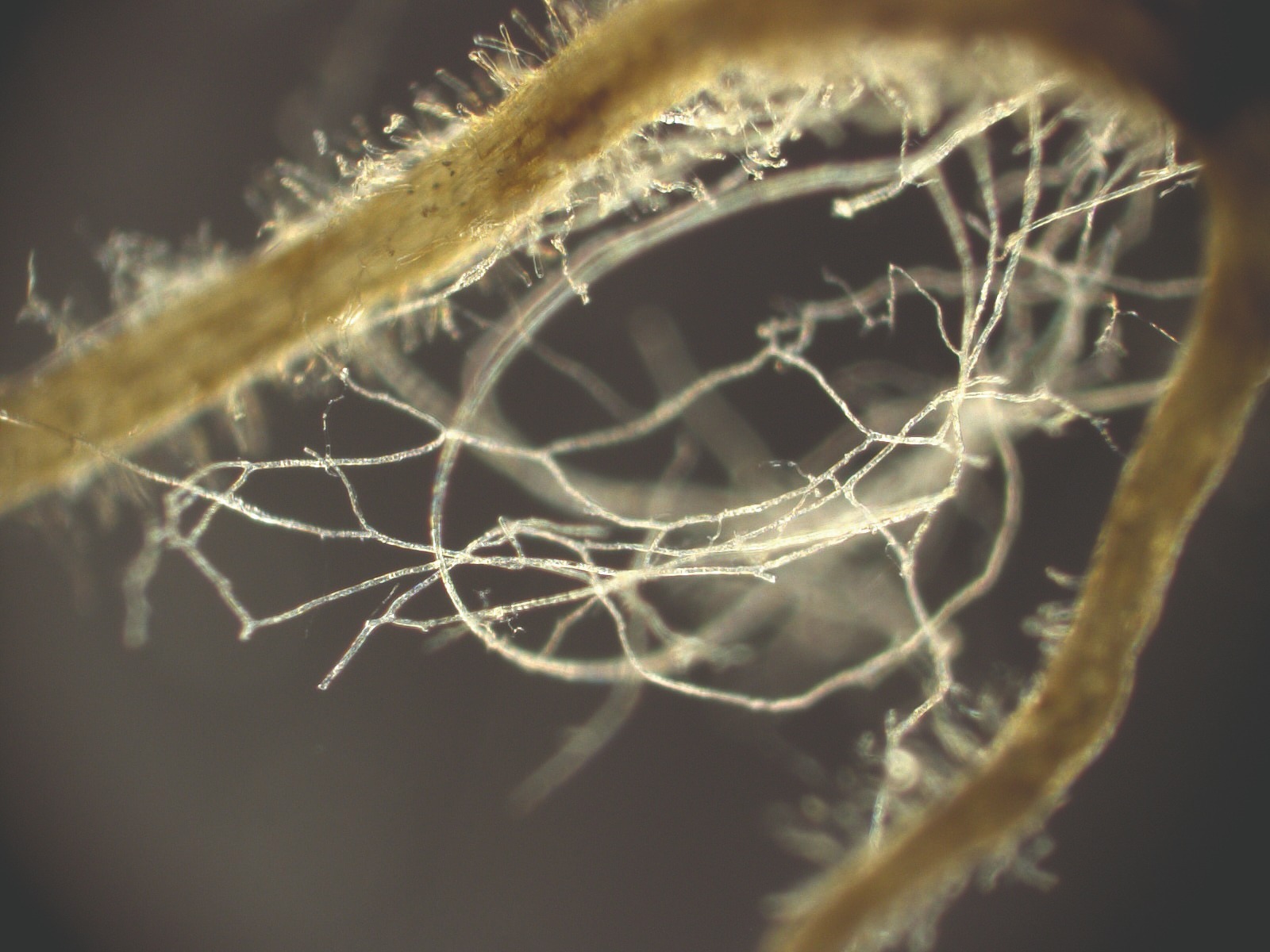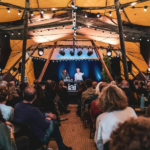The creation of global mushroom maps is unearthing new species and teaching us how they support Earth’s ecosystem

As Giuliana Furci picks her way through the dense, dripping greenery of Chile’s Patagonian forest, her keen eyes are seeking out one thing: mushrooms. Her gaze soon falls on a small white mushroom, its cap barely wider than its tall body. It’s in an unusual place, entangled with mosses in a peat bog. It may have never been seen before by human eyes.
Furci is among the world’s leading mycologists, and founder of the Fungi Foundation, where, she says, she “works for the fungi”. She has spent the last 25 years exploring the world’s least understood and often most uninhabitable regions to spot and map the fungal life she finds. The appearance of fungi’s fruiting bodies – mushrooms – is often brief. Some appear for just a couple of days, some for only half an hour. “My mission is to coincide [with them], to be in that place at the same time,” Furci says.
The history of fungal mapping stretches back decades, but the picture this data paints has a lot of gaps. Today, a surge in mapping efforts and technologies is accelerating what we know, by exploring new frontiers above and below the ground. Fungi are essential to the ecosystems they live in, and are helping to slow climate change. By revealing which fungi live where, these maps offer up data that can be used to protect them – and in turn, all life on Earth.
When Furci discovers a mushroom, a process kicks in: technical photography, notes about colour, smell, sometimes taste. Does it bruise? Was an animal living inside it? Is it sturdy, crumbly, gelatinous? She relates to each fungus as a fellow being: “You’re getting all these hints of who it might be,” she says. But as important as any of these details – perhaps more so – is the fungi’s location. We cannot understand a fungus without knowing where it grows. “The location is really important specifically for fungi,” Furci says. “Because fungi aren’t separate from the animal or plant that they live with, their symbiotes.”
Dr Greg Mueller is chair of the International Union for Conservation of Nature’s Fungal Conservation Committee. He emphasises the importance of knowing where a fungus lives if we are to protect it. “The different criteria for assessing [a fungal species’] threat status are all based on understanding where they are,” he says. The assessment looks at whether their habitat is imperilled, how widespread they are in an area, and how big their population is – all of which depend on location data.
Furci has travelled to more than 20 countries to find mushrooms growing in the unlikeliest of places – from freezing snow to hot desert sand. Still, the nature of her research means that she can only map the fleeting fruiting bodies she can see. There’s much more to the world’s fungal life that’s hidden from view. Some fungi thread themselves through the soil, and never produce a fruiting body. These are called arbuscular mycorrhizal fungi, and they interact with the roots of 70-90 per cent of land plant species to help them access the nutrients they need to survive. Like other types of fungi, they help lock huge amounts of carbon in the soil. In other words, they help slow climate change and keep much of Earth’s green life alive – but are all but invisible to humans.
Invisible, that is, until we look more closely at the soil. Scientists are now able to identify the presence of arbuscular mycorrhizal fungi by analysing soil samples to find the environmental DNA (eDNA) of the beings living in it. This method is showing them a world of underground life.
Building maps, layer by layer
The Society for the Protection of Underground Networks (SPUN) is a scientific research organisation that partners with the Fungi Foundation and is using eDNA to understand the underground. But as Dr Bethan Manley, SPUN’s lead computational biologist, explains: “you can’t punch a hole in the ground on every square kilometre of the planet – that’s a lot of holes to dig.”
Instead, SPUN builds maps using artificial intelligence to extrapolate data from places that have already been sampled to make predictions about areas that haven’t. They use machine learning models to input “lots and lots of layers of data”, Manley says – such as temperature, types of vegetation, precipitation and land use – and look for relationships between these variables that can then predict which fungi would grow in unexplored parts of the world.
It’s important to then check that the predictions are accurate by analysing real-life samples. In 2023, Manley travelled to Kazakhstan to do this, in collaboration with local partners. There were previously no samples taken from Kazakhstan’s soil, so the model’s predictions were based only on data from other comparable eco-regions. “Because there are no samples, we wanted to cover as much ground as we could,” she says. The team travelled through Kazakhstan’s varied landscapes – from dry, cinnamon-coloured desert to buzzing feather grass meadows and forest steppe – to collect soil samples from a total of 56 sites. They chose the location of each collection site based on the computer-generated mapping predictions, always at least a kilometre apart. “We actually ended up in a VW camper van, which was not the ideal transport system for going across the steppe,” she says. Temperatures soared to 38°C in the day, and dropped dramatically at night.
As important as the soil sampling at each point is the collection of observational data. “There’s a lot to describe,” Manley says. Although GPS points are “the most important aspect of the data”, the team also recorded detailed information about the surrounding vegetation with the help of a local steppe expert, as well as information about nearby water sources, and notes on the land’s use, such as grazing. “It was just all of these beautiful herbs, long grasses,” she recalls. “You’d walk through the grass and there would be crickets and insects jumping away from your feet and spider webs everywhere. It’s a really rich system and we know it’s very special because a lot of that is underpinned by really high biodiversity below ground.” The data collected on the ground in Kazakhstan aligned with the map’s predictions: “It was accurate,” she says.
The SPUN team analysed the soil samples in the lab, where they extracted the DNA of the beings living in each sample. To do this, a machine vigorously shakes the soil to break the cell walls, and chemical processes separate the DNA. They then use a procedure to amplify the fungal DNA so they can see it over that of the many bacteria and nematodes that accompany it in the soil. That is sent off for sequencing, and the results reveal exactly which fungi are living in that spot. Manley’s findings show that Kazakhstan’s soils are home to approximately 290 different mycorrhizal species, around 200 of which are believed to have been previously unknown to science.
Above and below ground
The data from Manley’s Kazakhstan samples have gone on to feed the machine learning model, so it can generate further predictions about less-understood fungal ecosystems. Grasslands in particular “tend to be a little bit overlooked,” Manley says, “because if you haven’t been there it does look like it’s just grass. But it’s such a rich system.” Grasslands are particularly important carbon sinks, and many are at risk of desertification. They are also places where underground arbuscular mycorrhizal fungi tend to thrive, quietly helping grasses’ roots to take up nutrients.
Even in their extensive travels across Kazakhstan, the team didn’t once spot a mushroom. It is a reminder that life-supporting fungal biodiversity is no less rich for being invisible to humans. This difference – between what we can see above ground and what can be detected underground – suggests that we need maps of both worlds. As Greg Mueller says, “the below ground data are telling us so much more than we knew before. But it’s still important to get the above ground data because they are going to tell us different stories.”
There’s a risk, Mueller says, that underground detection methods pick up on fungi that aren’t fully established in an area, giving a false positive. “Is it transient? We don’t know if it will be able to persist, to be able to complete its life cycle. So we have to take some extra caveats with [this kind of] data,” he says.
There’s also a risk of false negatives. Chanterelles are a popular edible mushroom, but Mueller says their below ground cells are difficult to pick up through eDNA sampling methods – so they’re easily missed. It’s more reliable to spot their fruiting bodies using the naked eye. For this reason, “we need a holistic approach using both above ground and below ground data,” he says.
Protecting ecosystems
SPUN’s first global map of mycorrhizal biodiversity will be released later this year. It’s relatively early days for underground mapping, but it is already beginning to unlock understanding that could protect some of the world’s most unusual and valuable ecosystems.
Palmyra, south of Hawaii, is one of the most remote clusters of islands on Earth – home to huge, tree-climbing coconut crabs and surrounded by an unusually high number of sharks. Out of the coral rubble grows Pisonia grandis, a threatened tree species whose high branches are a critical nesting site for seabirds. The SPUN team are analysing soil samples to help them understand how Pisonia grandis survives, and how it could be supported. One theory is that mycorrhizal fungi help the trees to access nutrients in the bird guano – or accumulated excrement – that collects in their roots.
SPUN’s fungal data is also being used to support campaigning efforts to protect valuable species and ecosystems. In Poland, for example, SPUN has funded local researchers who are collecting data on underground fungi to provide evidence around “monumental trees” that are being logged in the Carpathian primeval forests. Manley hopes that underground fungal maps will be used more broadly to support conservation efforts. “We want conservation organisations to use this type of data because it’s just very important,” she says. “Plants are the key organisms in systems, they basically run the whole show, but underlying them are mycorrhizal fungi that support them and stabilise them. If you’re trying to encourage back vegetation and you’re not factoring in the fungal layers, you might be missing a really key factor in restoring the health of an ecosystem as a whole.”
SPUN also aims to support the conservation of fungi themselves by highlighting where they’re most vulnerable. They are overlaying “threat maps” on their underground fungal maps, to highlight areas of important fungal biodiversity that are also at risk of threats like wildfires, soil erosion and intensive agriculture.
Geographic imbalances
The GlobalFungi database has created a valuable resource, but also revealed just how patchy global research is. Just 2 per cent of the fungal samples studied come from Africa, compared to 33 per cent from Europe. “Due to historic, more colonial scientific practices and biases against funding in some regions, there are sampling biases,” Manley says. To fill in these gaps, SPUN has funded nearly 100 researchers based in parts of the world where fungal sampling data is sparse. “They’re generating data in areas that they really understand,” she says.
There are also opportunities to expand our understanding of fungi by learning from the people who live alongside them. The Fungi Foundation is working with Indigenous communities to learn about ancestral knowledge of fungi, known as ethnomycology. They have set out strict ethical guidelines for conducting this work in a way that ensures respect, consent and appropriate compensation. Ethnomycological research has previously led to the discovery that the spores of certain puffball mushrooms found in drier areas of the planet – parts of Australia, Africa and the Americas – have been used by herders to heal their animals’ wounds. “The peoples that have lived in those areas have evolved independently to have the same relationship with that fungus,” Furci says. Learning more about these relationships tells us more about each fungus, and how it exists in its ecosystem.
The more we understand fungi, the better we can protect them. Butyriboletus loyo, for example, is a huge, heavy, edible mushroom that grows in Chile. In 2014, data revealed that it had become an endangered species. This led to government funding which the Fungi Foundation and their collaborators used to create a guide to sustainably harvesting these popular mushrooms.
As recently as 2013, there were just three species of fungi on the IUCN Red List of Threatened Species; today, there are 1,300. This is due in large part to the Global Fungal Red List Initiative, a project spearheaded by Mueller in 2013 and supported by mycologists around the world. “We still have a lot more to do,” Mueller says. “But having a number of species on the Red List now shows there are significant numbers of fungi that are threatened with extinction, and that the threats for the main part are similar to what plants and animals have.”
Destigmatising fungi
The gaps in our understanding of the world’s fungi are not only the result of sampling biases, or the fact that many fungi are hidden from view. It is also because their strange, many-shaped mushrooms have historically been considered suspect. “In many places, especially in western science, mushrooms have been associated with the three Ds: death, decay and disease,” Furci says. “Fungi have been overlooked and neglected and stigmatised.” Mueller agrees – “there was bad press. We didn’t do a good job talking about how important fungi are.”
But today, fungi’s beauty and value are beginning to be recognised. “All of a sudden fungi are having their moment,” he says. There is growing recognition of the useful role fungi can play in tackling environmental problems, helped by Merlin Sheldrake’s book Entangled Life, which recently became an international bestseller.
It seems that the more we know about fungi, the more fond we are becoming of them. Instead of undesirable, we are realising they are indispensable – a shift that Furci’s research and campaigning aims to accelerate. “My life’s work has been to move the perception of fungi away from ‘the three Ds’ to instead be about the value in decomposition,” she says. “In a cycle of life, there isn’t a beginning and end.”
In their unusual ability to break down what is dead so it can feed new life, fungi symbolise the cyclical nature of all things. Put them on the map, and we can learn not only about them, but also about the ecosystems they are part of – about where and how life works as it does. Understand this, and perhaps we will let more living things move through their unending cycle.
This article is from New Humanist’s Summer 2025 issue. Subscribe now.


